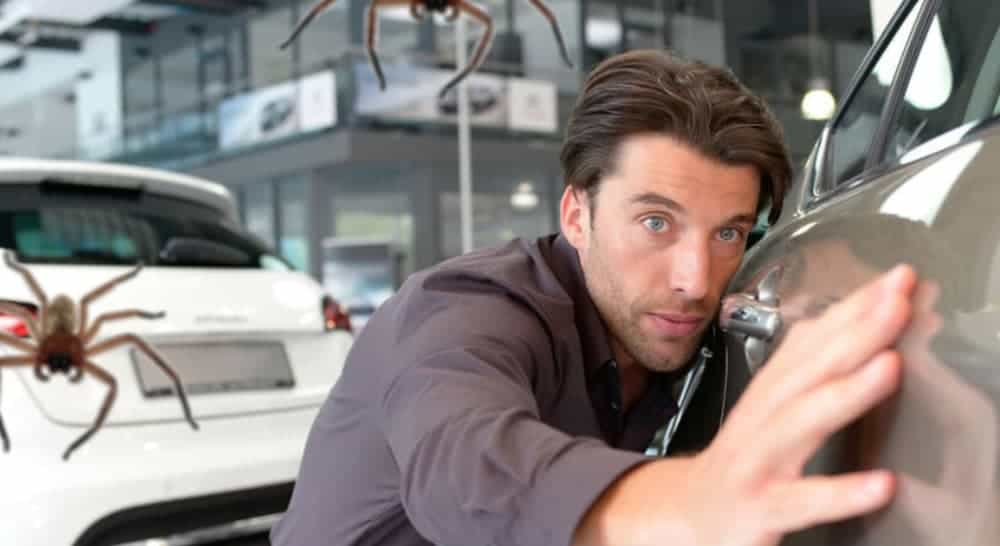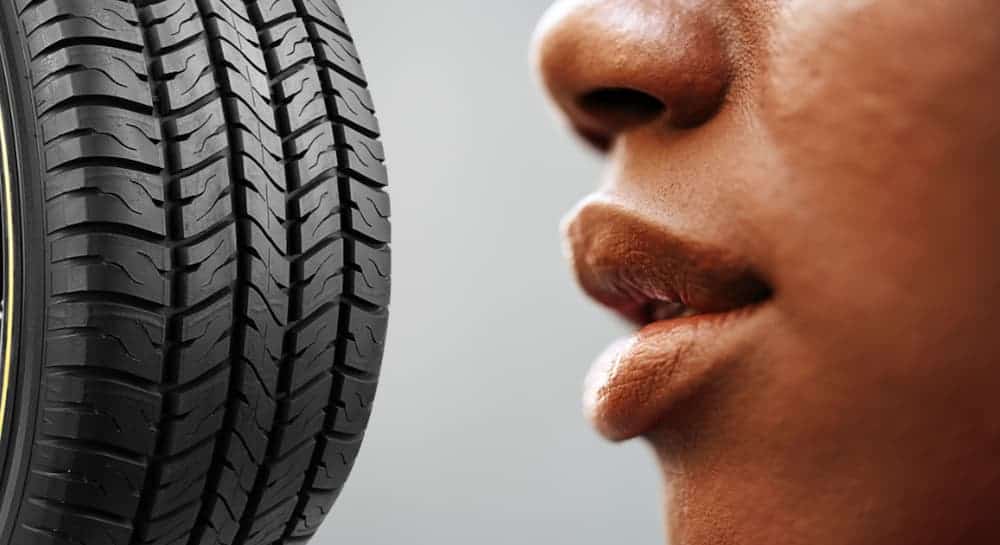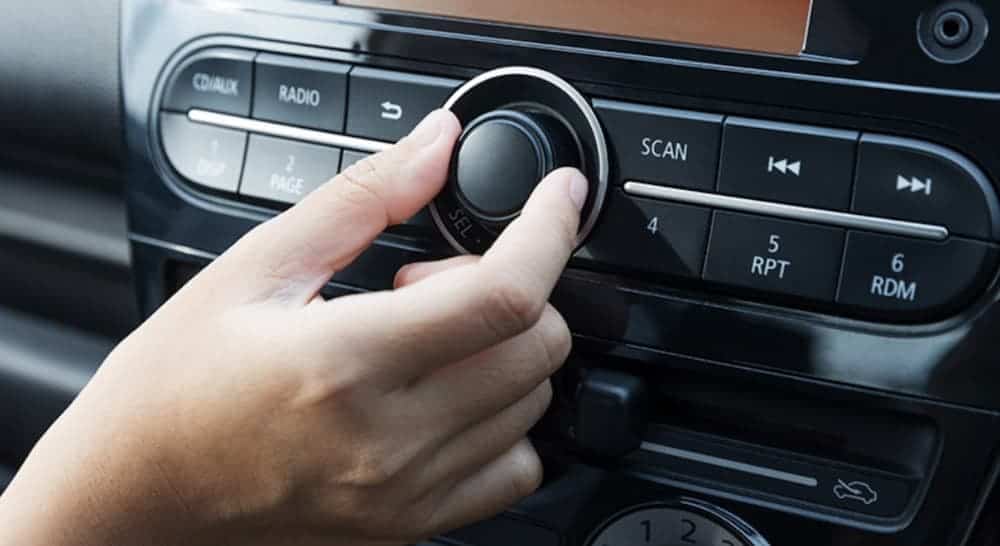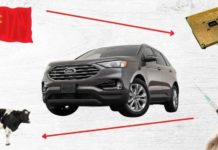Friends (and I use that term loosely), you’ve been lied to all your life. Lied to by your government, lied to by your religion, lied to by your parents and school teachers, and – perhaps most importantly – lied to by your auto industry. They all want you to believe that you can look at used SUVs for sale (or trucks or cars) and that you can find one, and everything will be just gravy. But the reality, the real reality, is that the used auto industry is a breeding ground for nightmares.
This is something no one wants to talk about; because once you slice through the veil and see the cold horror on the other side, you’ll never be the same. And you know that dragging someone else down to your level by warning them about the truth of the used vehicle industry is an unforgivable act. The sort of thing that leaves a stain upon your soul, making you forever tarnished in the eyes of all other sentient beings on this plane of existence and every other. So, with that in mind, let’s get into what you need to do when shopping used SUVs for sale.
#1 – Check for Spiders
I know what you’re thinking, “Sure, I want to make sure there aren’t a bunch of spiders nestled in the wheel-well or around the engine.” Good start, but you’re thinking much too small, friend of mine. See, the kinds of spiders that often lurk in and around an SUV or other car just sitting and waiting to be bought are much larger and more extensive than that friendly spider living in the corner of your basement, eating other bugs that come along.
I’m talking about real spiders, the kind that ruled the earth when we were still developing from marmosets and living in trees. The kind that you’ll often mistake for the rug on your floorboard, resting your feet comfortably upon them without realizing that you’ve disturbed a massive hoard of eight-legged horrors forming a swarming blanket inside your vehicle. Of course, as they begin to work their way up the inside of your pant-leg, you’ll realize all-too-late the mistake you’ve made.
Your first instinct might be to reach around under the steering wheel and dashboard or to shine a light around inside your trunk. These are mistakes. Reaching blindly into what could be a throbbing web of spidery horrors is a great way to pull back a stump and feel them begin to crawl along your [removed by editor]. Light only enrages them. Your best bet is to use fire – bring your flamethrower (you have one by now, right? You’re one of my readers, so you should) and lay down a few quick bursts of fire all around the inside of the trunk and interior of any used SUVs for sale that you’re interested in. This way, if you feel something crawling along the back of your leg or tickling your neck, it’s most likely a hallucination or just the [removed by editor] underneath your skin.
#2 – Taste the Tires
Listen to your Uncle Von Gourdboddum here, boys and girls, because it just might save your life. Simply looking at and even kicking the tires on a used SUV for sale is no way to tell what kind of condition they’re in. Used car dealers have all kinds of tricks they can use to make the tires look good. Their favorite is an aerosol spray that fills in cracks with sugar to make the tires look like they’re in great shape when they’re really a bunch of rolling deathtraps.
That’s why you need to taste them. Not a big taste, don’t take a bite out of the tires or anything insane like that. Just sit down on the ground, make full eye contact with the salesperson you’re dealing with, and confidently apply your tongue to the edge of the tire. Make sure you’re licking the rubbery tire itself, not the hub cap or any part of the wheel of the car – that taste won’t tell you anything.
Tires in good condition will taste like roasted chicken with just a hint of cumin to them. If the tires taste at all sweet, then that’s a pretty good sign that the dealership is trying to pull one over you on, and the tires are in bad shape. Good tires are savory and firm against the tongue, they chew well and offer exquisite mouth-feel, but you didn’t hear that from me.
#3 – Listen to the Upholstery
This might seem a little strange, especially after the common-sense wisdom I’ve dispensed so far, but it can save you a lot of money down the road. When you check out a used SUV for sale, sit inside it and really pay attention to the sound of the interior as you do so. In particular, listen to the upholstery as your posterior slides across it and comes to rest.
Good upholstery should sound like fabric or leather, a slight squeak to it perhaps, or simply the whisper of your clothes against it. If you hear the upholstery scream at all or beg for help, then you should move on to a different vehicle. The last thing you want to deal with is an interior in the throes of agony and terror, pleading for release from its existence when you’re just trying to take your kids to school.
Also, if you notice a slight moan, that’s a bad sign too. You need to be able to trust your interior through and through, so you don’t want to have to worry about your upholstery being a pervert. Good American upholstery supports your rear-end confidently without enjoying it; any signs of arousal means you’re dealing with a real freak.
#4 – Tune the Stereo to 98.6 FM
What most people don’t realize is that 98.6 is not only the average temperature of the human body but also the average frequency for the human body. That means that by tuning the stereo to 98.6 FM, you should be able to listen to the workings of your own organic system. Make sure everything sounds good and healthy; otherwise, you might be dealing with a vehicle that won’t be able to help you keep track of your medical wellbeing. And why even bother with such an SUV?
#5 – Squeeze the Interior Proboscis
This is going to take a little work on your behalf, but it’s well worth it, trust me. Open the front hood of the used SUV that you’re checking out and look for the front cloaca. If you don’t have a lot of experience with this, then you might have a hard time finding it, especially since so many manufacturers like to put the engine in the way.
Just look for the beak, and beneath it, you’ll notice a series of undulating pustules; below this is where you’ll typically find the front cloaca. Apply pressure to the exterior duodenum (the owner’s manual will indicate where to find it) to get the cloaca to open, and then reach inside past the uvula to find the interior proboscis. You’ll probably need to reach pretty far, bring some elbow-length gloves, but once you find the proboscis, then give it a good squeeze. Make sure the endoplasm is warm and viscous, and check that the polyps feel nice and firm.
That way, you know you’ve got a good one.
Editor’s Note: We would like to take this opportunity to remind our readers that you indulge in these articles at your own risk, and that reading them is your own damn fault. That feeling of something crawling along your skin, tickling the little hairs on your legs, is entirely in your head – much like the eggs the spiders laid last night. Thank you.















